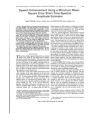
So I do not intend anything that follows as a comment on the current stance of our policy.īefore getting too deep into the details, let me preview my bottom line. While I hope to convince you that this path is worth exploring, I cannot say that I know yet exactly where it will lead-and, in particular, whether it will ultimately deliver monetary policy prescriptions that differ in a quantitatively meaningful way from those offered by our current models. In the interests of advancing the conversation, I will venture some tentative thoughts on one possible approach, which is somewhat different than what I have seen in other recent work on this topic. The second question is, how does one operationalize the theory? What sorts of data should one look to, and what sorts of empirical methods should one use, to calibrate by how much the stance of monetary policy should be altered relative to the case in which financial stability considerations are completely set aside? This question is very difficult. The easier question is, should financial stability concerns, in principle, influence monetary policy decisions? To be specific, are there cases in which one might tolerate a larger forecast shortfall of the path of the unemployment rate from its full-employment level than one would otherwise, because of a concern that a more accommodative policy might entail a heightened risk of some sort of adverse financial market outcome? This question is about theory, not empirical magnitudes, and, in my view, the theoretical answer is a clear "yes." I will say a bit more about why shortly, but let me stress that I am not breaking any new conceptual ground here the basic argument has been laid out by a number of others, including Woodford and Kocherlakota. 1 Doing so involves tackling two questions-one that is relatively easy and one that is much harder. I would like to talk today about how one might explicitly incorporate financial stability considerations into a monetary policy framework. Governor Stein presented identical remarks at the International Monetary Fund 2014 Spring Meetings on April 13, 2014, and at the 2014 Financial Markets Conference on April 16, 2014. Factors Affecting Reserve Balances - H.4.1.Industrial Production and Capacity Utilization - G.17.





 0 kommentar(er)
0 kommentar(er)
